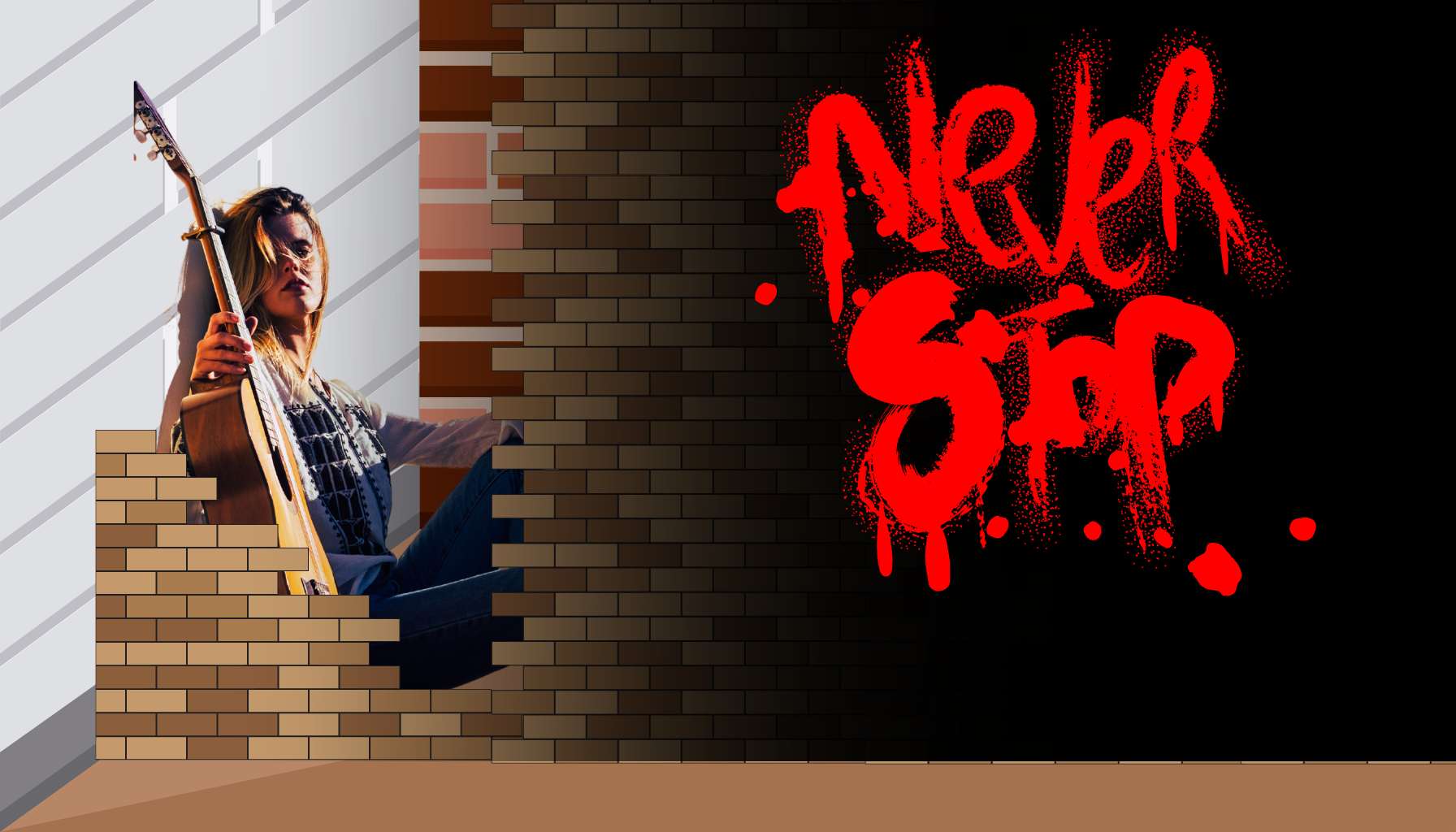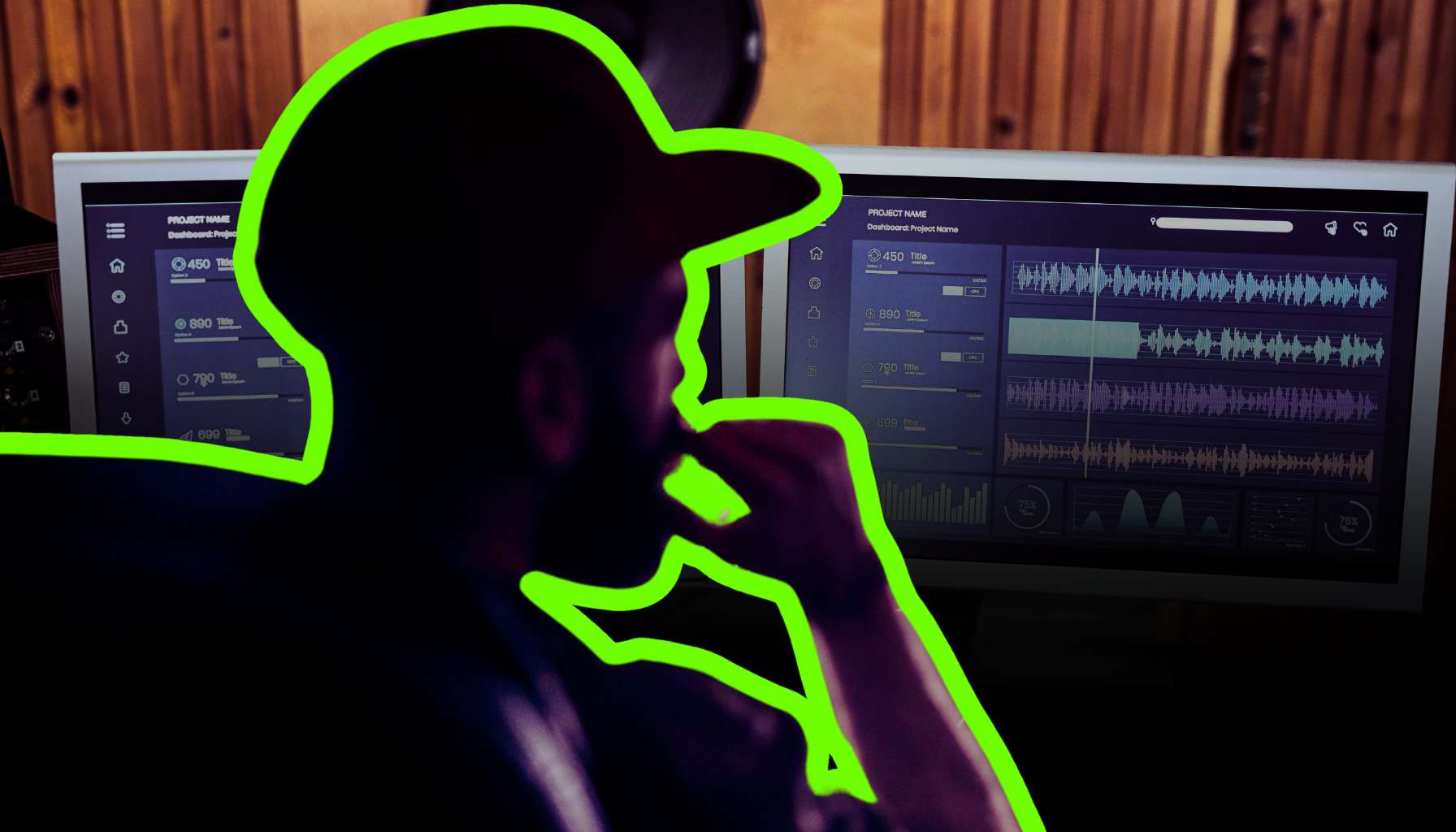Introduction to the Artist Biography in Marketing
A cringe-worthy artist bio is like an awkward handshake; it leaves an unshakeable feeling that something’s not quite right. And in the high-stakes poker game of the music industry, your artist biography is more than a mundane deck of cards—it’s the ace up your sleeve. Whether you’re a fresh-faced newbie with dreams as big as your sound or a seasoned melody-maker strumming the heartstrings of world-weary souls, your bio is your story, told your way. But as we’ve finessed our language and struck the chords of clear, concise, and captivating content in Section 6, we now turn to wield those same instruments with the deft touch of a maestro in Section 1.
The Role of an Artist Biography
Stepping onto the stage of “First Impressions”—the wording you craft is the virtual firm grip, the sharp suit, the irresistible smile that sets the tone for potential fans, label execs, and granny Joe who stumbled upon your Spotify profile by way of a cat video.
First Impressions and Establishing a Presence
Your bio isn’t just a block of text; it’s the origin story of your superhero alter ego, the prelude to your artistic opus. Within it lies the power to spellbind your audience into sticking around for the first verse, chorus, and the encore.
Integrating Your Bio into Your Marketing Strategy
A killer bio is more than a fact file; it’s a vibe, a feeling, a connection. It’s woven into the fabric of every press release, every EPK, and every “About the Artist” blurb, singing in harmony with your brand’s chorus.
The Key Components of an Effective Biography
Now, let’s don the hats of musical archaeologists to excavate the essential fossils of a bio that resonates, engages, and informs. Are you dusting off the fossils from your formative jam sessions, or framing the gold records hanging in your mental hall of fame?
Essential Information to Include
The sacred scrolls to inscribe include your genre, influences, accomplishments, and, lest we forget, that unforgettable anecdote about your battle of the bands triumph—each detail painting strokes on the canvas of ‘You’.
Crafting a Narrative That Engages and Informs
It’s not merely about the what and the when; it’s the how and the why that wrap listeners in your melodic tale, urging them to lean in closer as you pluck at the strings of their curiosity. As our sights set forward, understanding your audience’s wants and needs becomes paramount, akin to a guitarist tuning her instrument before a set.
In Section 2, we’ll dissect who’s in your crowd—is it the head-nodding A&R guy in the back, or the front-row fans with lyrics tattooed on their hearts? We’re about to tailor that biography with the precision of a bespoke suit, ensuring it hugs the contours of your intended audience, whether they’re industry brass or the fan brigade. The melodies of each word will align, buzzing with the frequency of your career aspirations. So, tune your instruments and clear your throat, for it is time to compose the symphony that is your musical journey.
Understanding Your Audience and Purpose
Strap in, artists and marketing maestros—the time has come to tour the wild terrain of your target audience’s psyches. Like explorers seeking a fabled city, a musician’s quest to align their biography with the listeners’ hearts and industry movers’ spreadsheets is fraught with peril and potential missteps. After laying down the foundational bricks of an artist’s story, it’s time to sculpt an empathetic narrative that resonates, reverberates, and does the electric slide right into the souls of those who hear it. So how do we chart this treacherous course? Kick back, let’s muse over that mug of matcha, and dive into section 2’s foray into audience alignment.
Defining Your Target Audience
Ah, the audience—those elusive patrons of the arts, as varied as the chords in a jazz solo. Would the leather-clad punk rocker and the tweed-wearing violin enthusiast raise the same lighter to your musical flame? Doubtful! Hence, the emboldened artist must navigate the demographic seas, tailoring their biography to echo in the halls of execs whilst serenading fans off their converse-covered feet.
Tailoring Your Bio to Industry Professionals vs. Fans
Picture the industry pro, squinting at a screen, a mountain of bios piling up like unpaid parking tickets. Yours needs to shine like a diamond in the rough, with the nitty-gritty—stats, figures, and accolades—front and center. Meanwhile, fans yearn for the human touch, a tale that will make them spill their soy lattes as they lean in, whispering, “Tell me more.”
Considering the Preferences of Different Demographics
And let’s not forget age, taste, and culture—the trinity of personal preference that dictates whether your bio hits a high note or falls flat. Research, my friends, is your guiding star. Look to the patterns of your audience’s consumption, hang out in their digital haunts, and emerge with a bio as aligned with their desires as a pop song’s chorus with that inevitable key change.
Aligning Your Biography with Your Artistic Goals
Beyond appeasing the masses and industry giants is the grander quest of intertwining your biography with the golden threads of your career aspirations. Your bio should not just recount the past—it’s a forecast, gently nudging perceptions toward the marquee lights of your future dreams.
Shaping Perception to Fit Your Brand
It’s a marketing alchemy, transforming base metals into sonic gold, with your bio as the crucible. Craft a story that encapsulates not just who you are, but who you aim to be—the goals that tug at your sleeves in the dead of night and the brand you’re carefully nurturing like a bonsai tree of burgeoning beats.
Highlighting Your Ambitions and Aspirations
Don’t be shy; let them know what you covet in your career. Are you gunning for the Grammy stage? Speak it. Dreaming of serenading stadium crowds? Declare it. Through the sheer force of your written visions, make your reader a believer. As we gracefully bow out, having painted an audience portrait and cast our aspirations into the future, the narrative wand is passed to section 3. Our journey forward beckons with tales of origins, influences, and climactic crescendos. It’s showtime—a moment to peel back the curtain on your musical lineage like a family heirloom, sharing stories that resonate with authenticity and connection. The biography stage is set, and you, my dear artist, are the headliner, the crowd hushed, waiting for the epic saga of your rise to resonate with the patter of rain on a studio roof.
Outlining Your Music Career Journey
It’s a truth universally acknowledged that an artist without a backstory might as well be a guitar without strings—sure, it’s got potential, but where’s the music? Your biography is that set of strings, tuned just right to resonate with your audience. After pinpointing your audience and honing your artistic goals, it’s time to string them along the narrative of your musical journey, giving them a tune they can’t help but hum. This is the meat in the sandwich of your marketing strategy, the plot twist in your personal novel—where your past meets your present and hints at a chart-topping future.
Establishing Your Musical Origins
Sharing Your Entry into Music
Every superhero has an origin story, and music maestros are no exception. Were you the toddler who used pots and pans better than any kitchen utensil ever could? Did a vintage record player spin you into a melodic trance that never really broke? These tales of inception aren’t just quaint beginnings; they’re the seismic events that launched your musical odyssey. Illustrate a tapestry of your formative moments so that your fans and industry sharpshooters alike get to witness the making of a legend.
Influences and Inspirations That Have Shaped Your Sound
In the concerto of your life, the composers who have influenced you are a symphony waiting to be heard. When fans read your biography, they’re not just window-shopping for your discography; they crave the secret sauce, the recipe of rhythms and rhymes that make up your signature sound. Embed the spirit of your influences within your bio, and the melody of your music might just echo louder in the listener’s ear.
Documenting Milestones and Achievements
Noteworthy Performances, Releases, and Collaborations
Now, hold your horses before you start jotting down every time you sang in the shower with flawless pitch. Selectivity is key. Whether it’s that open-mic night that had A&R reps nodding along, or the collaboration with an artist so cool they’re practically frozen, these are the gems that let your biography sparkle with the luster of legitimacy. Curate this section with the precision of a museum director hanging their finest pieces. Just remember, in the masterclass of your career, every exhibition counts.
Awards, Recognition, and Critical Acclaims
A nod here, a trophy there—accolades are the proverbial pats on the back that say, “Yep, you’ve made it.” Don’t just list them like a grocery list though; narrate your triumphs with the verve of a fireside raconteur. Peak moments should be celebrated and shared, inspiring awe and a dash of envy. Your bio should show, not tell, the artistic journey for the riveting saga it truly is—with every award serving as a rivet in the narrative. Transitioning smoothly from a cavalcade of triumphs, our next act delves into a more intimate setting. After detailing the milestones of your career with the flair of a quintessential raconteur, it’s time to settle down beside the cozy fire of your persona and brand identity. Picture a dimly lit lounge where your personality can shine through velvety vocals—this is where your true voice echoes, and we’ll craft it to ensure that it doesn’t just echo… it resonates. The next section, showcasing personality and brand identity, will tease out the unique timbre of your character, mirroring the notes and tones of your musical essence without overwhelming your soon-to-be fans with the very fabric of your soul.
Showcasing Personality and Brand Identity
In the symphony of the music business, an artist’s biography acts as the libretto, guiding the audience through the thematic narrative that is your career. Now that we’ve set the scene with your origins and accolades, it’s time to infuse your biography with the spices that truly flavor your musical essence – your unique personality and brand identity. Question is, how do you sprinkle just enough personality to season the stew without overpowering it? Striking that perfect balance can be as tricky as hitting the high notes after a night out with the band.
Reflecting Your Unique Voice and Style
Your music has a voice, but so does your biography. The language and tone you choose are instrumental soloists in the concert of your narrative, setting the rhythm and mood for what’s to come. A folksy twang in your wording can transport the reader to a cozy cabin porch, while a snappy, upbeat phrasing could pull them into the neon lights of a bustling cityscape. Here, authenticity is your beacon; let it shine through the mist of industry jargon and dazzle with distinction.
Language and Tone That Mirror Your Music
The lexicon you wield in your biography should echo the reverberation of your tunes. If your music’s got that soul-shaking, boot-stomping vibrancy, then your bio better not read like a sleepy lullaby. That said, overdoing it can leave folks feeling like they’ve been hit over the head with a thesaurus. Moderation, dear artists, is key.
Injecting Personality Without Overwhelming the Reader
As for showing off your sparkling personality—let’s face it, you’re a rockstar, not a tax attorney (unless moonlighting in fiscal law is your thing, no judgment here). Your bio is the ideal stage for a well-timed anecdote or a clever quip that gives a glimpse of the person behind the persona.
The Interplay Between Personal Narrative and Professional Image
Balancing personal allure with professional poise is like walking a tightrope while juggling fire—it requires finesse and a bit of daring. Your bio should narrate your journey not just as a carousel of events, but as a mosaic of motivations, triumphs, and lessons learned. These are the rivets that architect the bridge between you and your audience, inviting them to cross into your world.
Balancing Engaging Stories with a Professional Approach
Even the most riveting narratives need a dash of professionalism. Pepper your bio with engaging stories, but dress them in a tuxedo—dignified, but ready to party. Remember, wild tales of on-the-road antics might captivate, but pairing them with reflections on growth or artistic vision shows depth and direction.
Using Anecdotes and Quotes for a Personal Touch
Who doesn’t love a memorable quote? Whether it’s a mantra that fuels your creativity or a passing comment that stuck with you, a well-placed quote can be the cherry on the sundae, leaving readers with a taste of your ethos. As we swing from the storyline vines of personal narratives and branding tales, we approach the dense thicket of writing techniques that will transform your bio from a mere sequence of events into a vibrant tapestry of your artisthood—a compelling and engaging biography. The next section is the crucible where your artist bio is forged into a compelling narrative, complete with storytelling elements that will captivate your readers, as they eagerly anticipate the next chapter of your artistic odyssey. Sharpen your pencils (or, you know, just get your typing fingers ready), and prepare for a grand plunge into the literary river, where descriptive imagery and evocative language await to carry your tale to the shores of engaging bio bliss.
Writing Techniques for Crafting an Engaging Bio
Yes, your music can pierce the soul, but can your biography tickle the fancy of fans and industry bigwigs alike? In the sonic sea where every artist is a droplet, a biography is your lifeboat, crafted not from wood but from words – words that can float you to the top or send you spiraling into the abyss of the unread and unremarked. Here, dear artists, we pull back the curtain to reveal the wizardry of engaging writing techniques that transform a humdrum bio into a sizzling narrative to remember.
Storytelling Elements that Captivate Readers
Let’s face it, ‘born at a very young age’ isn’t the origin story to set the world alight. As an artist, your biography should sing with the cadence of storytelling. But what’s a story without a dash of drama, a sprinkle of suspense, and a crescendo that leaves readers clamoring for an encore? Employ narrative arcs that chart the rise from obscurity to spotlight and thematic threads that weave through the fabric of your artistic persona.
Employing Narrative Arcs and Thematic Threads
Consider your musical trajectory: the peak moments, the epiphanies, the battles fought with nothing but a six-string and a dream. These are the beats of your narrative drum, muster them to build an addicting rhythm that beckons readers to nod along.
Creating a Vivid Picture of Your Artistic Journey
A biography without flavor is like a concert without sound. Create a vivid picture by parachuting your reader into the heart of your journey. Paint with broad strokes the scenes that have sculptured you – that first strum, the chills of applause, the sweat of the stage lights – invoke the senses, and bring them along on your odyssey.
Language and Descriptive Imagery
In this concerto of a bio, each word is a note, and phrases are the melodies they form. Choose them with the scrutiny of a maestro picking the orchestra. Evocative language and motifs that mirror your sound elevate your story from mere text to an atmospheric experience.
Using Descriptive Language to Create Atmosphere
The bio is your stage, and the language, your performance – it must resonate, reverberate, and respond to the mood of your work. Visual and emotional cues in your phrasing can transcend the informational, dipping into the experiential and leaving a lingering aroma of your artistry.
Avoiding Clichés and Generic Statements
Dodging the bullet of clichés and generic braggadocio isn’t just savvy – it’s survival. The music world is laden with “passionate singer-songwriters” and “unique sounds”. Stand out by bending language to your will, eschewing worn-out phrases for authentic expressions that are uniquely yours. As we stitch together the narrative fabric that cloaks your artistic soul in words, the next logical segue leads us to this – structure. A powerful bio is a symphony with a clear beginning, middle, and an end that leaves the audience in awe. In the upcoming section, your bio goes from raw, formless clay to a sculpture of Apollo with chisel strokes of structure and focus; a biography so tantalizingly crafted it could make even the sternest industry titan swipe right. We’ve laid out the color palette, and now it’s time to paint with the refined brushstrokes of structure for maximum impact. Get ready to dissect, with surgical precision, the anatomy of an engaging opening and develop the cohesive flow that propels your readers through each chapter of your musical saga.
Structuring Your Biography for Maximum Impact
Every artist has a story, but not every story has an audience snoozing like it’s naptime at the daycare. The structuring of your artist biography shouldn’t be a cure for insomnia; it ought to be as compelling as the final chorus of your hit song, as intriguing as your enigmatic album cover, and as punchy as your bassist after a few too many. Yes, you’ve etched personality into your bio and employed storytelling, but now let’s make sure it’s constructed with the sturdiness of a stage dive-ready platform.
Crafting an Intriguing Opening
The hook: it’s not just for pirates and catchy choruses. Your biography’s opening should hit the reader like a riff so filthy it needs to be washed with soap. Bland introductions begone; start with an anecdote, a bold statement, or a mystery that begs unravelling. As your readers’ eyes scan those first few lines, make sure they’re thinking, “Now this—this is a tune I want to keep playing.”
The Hook: Piquing Interest from the First Sentence
Remember, the online attention span is shorter than the lifespan of a mayfly. Your biography should capture attention faster than a flashbulb at a red-carpet event. Consider beginning with a pivotal moment or a significant milestone that not only highlights your talent but also embodies your journey.
Establishing Your Artistic Identity Quickly
Swiftly get to the heart of who you are as an artist. Are you the underdog from a small town with a dream big enough to intimidate the stars, or the avant-garde outlier painting outside the lines of genre? Be clear, be compelling, and, above all, be you.
Developing a Cohesive Flow
After snagging your reader’s attention, don’t drop them like a hot guitar pick. Guide them through your story with the ease of a ballad transitioning into an up-tempo bridge. Ensure that your narrative glides from your origin story to your music career’s highlights, each part complementing the next like harmonies in a chorus.
Ensuring a Logical Progression of Ideas
Choppy writing kills the vibe faster than a busted speaker. Your bio should lead the reader down a winding road of your musical exploits with natural transitions. Imagine yourself as the charismatic frontman, smoothly segueing from one crowd-pleasing hit to the next.
Keeping the Biography Concise and Focused
While it’s tempting to divulge every encore and off-stage antic, brevity is the soul of wit—and of a good bio. Cut to the core of what matters. If it isn’t telling of your persona, reinforcing your brand, or showcasing your achievements, it’s just static in the mix. Now, with a biography that’s structured to mesmerize, it’s time to wield the red pen of ruthlessness. In the forthcoming section, we tighten our laces for the editing sprint, where fluff is slashed, clarity is king, and revisions are a relentless pursuit of perfection. Don your editor’s cap and prepare for a judicious pruning; we’re about to take your bio from a garden of rampant growth to a Zen landscape of impactful precision.
Editing and Refining Your Bio
After weaving the spell-binding tale of your musical odyssey, it’s time to don your editor’s hat—a hat that is less about fancy feather plumes and more about surgical precision. Editing, dear artists, is the unsung hero of the biography world, transforming a good story into a succinct saga that packs every ounce of punch without the fluff that could dissipate its power.
Here in the sanctum of section 7, we channel our inner Hemingways to distill the essence of your epic in a flask of finely tuned sentences, ensuring every word earns its keep.
Achieve Clarity and Brevity
The greatest stories are often retold not for the breadth of their paragraphs, but the depth of their impact. Your bio should be a crystal clear reservoir from which readers can sip all they need to know – no more drowning in verbose waters here.
Cutting the Fluff: Editing for Precision and Impact
Tightening the laces of your narrative boots, step out with only what’s integral. Prune extravagancies, and you’ll avoid the dreaded TL;DR (too long; didn’t read) curse that can befall even the most talented of virtuosos.
The Balance Between Detail and Overwhelm
Now, maintain a ballet-like balance, tiptoeing along the fine line between giving enough detail to enchant and dishing out an epic so lengthy it could double as a doorstop. Remember, brevity is the soul of wit—and your biography should be whip-smart.
Seeking Feedback and Revisions
When one is too close to the canvas, it’s tough to see the painting in its entirety. Seeking external perspectives is like adding more colors to your palette. Fresh eyes can pinpoint where your tale may stumble or where it shines brightest.
Importance of Objective Opinions and Constructive Criticism
Embrace the constructive chirps of critics; they may sting like a rogue high-hat clatter, but they aim to harmonize the cacophony into a symphony. The right feedback can elevate your biography from background noise to chart-topping hit.
Implementing Changes to Strengthen Your Biography
Finally, wield the feedback like a masterful conductor’s baton, orchestrating revisions that bolster the storytelling and crystallize your identity. Small tweaks can turn your biography into a siren song that beckons readers and icons of the industry alike.
On the other side of the editing process lies the vast landscape of marketing platforms, each a stage for your polished biography to perform its vital role. As we transition into section 8, prepare to unravel the art of adaptation, ensuring your biography is not a one-hit-wonder but a timeless classic that resounds across streaming services, social media, and promotional materials.
Your bio, now honed to near perfection, is about to strut onto the digital stage, ready to serenade every spectator from the first line to the final flourish. So, take a deep breath, step into the spotlight, and let the curtain rise on the next act of your marketing masterpiece.
Utilizing Your Biography Across Marketing Platforms
Adapting Your Bio for Various Formats
An artist’s biography should be versatile enough to fit across different marketing platforms, including streaming services, social media, and promotional materials.
Profiles on Streaming Services and Social Media
On streaming services and social media, an artist’s biography should be concise and engaging, capturing the essence of their identity in a limited space while enticing potential followers and listeners.
Press Kits, Websites, and Other Promotional Materials
For press kits, websites, and other promotional materials, the biography can be more detailed, providing a complete picture of the artist’s journey, influence, and accomplishments.
Updating Your Bio to Reflect Career Developments
Artists should periodically update their biographies to reflect recent career developments, ensuring the content remains current and accurately represents their professional progress.
When and How to Revise Your Biography
Knowing when to update the biography is essential; key moments might include the release of new work, significant achievements, or changes in artistic direction.
Maintaining Relevance and Accuracy Over Time
Maintaining the relevance and accuracy of a biography over time is crucial for presenting a consistent and up-to-date image to fans, industry professionals, and media contacts. Regular revisions help keep an artist’s public persona aligned with their evolving career and artistic outlook.
FAQs on Crafting an Effective Artist Biography for Marketing
How long should my artist biography be?
The length of your artist biography can vary depending on where it will be used, but a general guideline is to keep it succinct yet informative. Online platforms might require a shorter bio (around 150-250 words), while press kits or official websites can accommodate longer versions.
What kind of achievements should I include in my bio?
Include significant and relevant achievements that highlight your evolution as an artist, such as notable performances, awards, album releases, collaborations, or critical acclaim.
Can I write my artist bio in the first person, or should it be third person?
While the third person is standard for a more professional and objective tone, the first person can be used for a more personal and intimate feel. The choice depends on your branding strategy and the platform where the bio will be used.
How do I make my story engaging if I’m a new artist with less experience?
Focus on your passion, dedication, and future aspirations. You can also highlight unique aspects of your personal story, your creative process, and the themes you explore in your music.
Should I mention my musical influences in my bio?
Yes, mentioning your musical influences helps contextualize your sound and can create a connection with audiences who share similar tastes.
How can I reflect my genre of music in my biography?
Use language and tone that resonate with the typical audience of your genre. Incorporate genre-specific terms and touch on how the characteristics of the genre are reflected in your work.
Is it necessary to hire a professional writer to create my bio?
While not strictly necessary, a professional writer can help craft a compelling narrative, especially if you’re struggling to write about yourself in a way that is both engaging and objective.
What is the most common mistake artists make in their bios?
Common mistakes include being overly verbose, using clichés, failing to convey a unique artist identity, including outdated or irrelevant information, and not targeting the appropriate audience.
How often should I update my biography, and why is this important?
You should update your biography to reflect any major career changes or milestones, such as new album releases, significant performances, awards, or artistic evolution. Keeping your bio current is important for maintaining professional relevance and ensuring that your audience and industry professionals have the latest information about your career.















